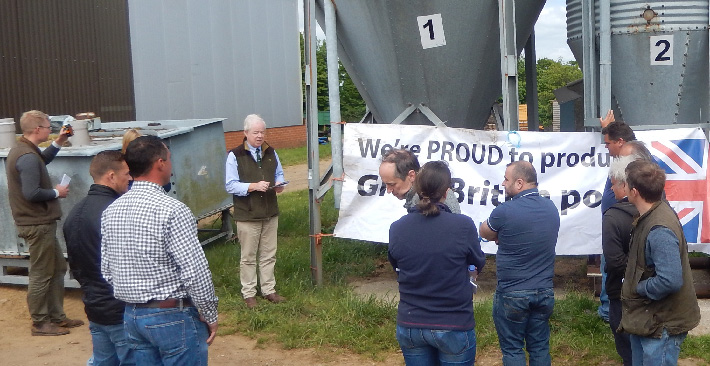Despite the upcoming Bank Holiday Monday, no major glut of pigs in the system and with all of the big players slaughtering on Monday, it’s been possible to avoid too much of a rollover situation arising, although demand is reported to be quiet and pig numbers are reasonably plentiful.
As a result, however, spot buyers were spoilt for choice and most were able to buy surplus (one off) loads of pigs in the 130p/kg region, although regular spot sellers were, in most cases, able to get stand-on bids a few pence above this.
With one exception, weekly announced prices (shout prices in disguise) held at similar levels, although some of the big players are warning of tough times ahead, despite the gap between UK and EU mainland pig prices not being quite as wide as it looks after allowance is made for much more lenient EU grading drops, transport contributions and lower or nil slaughter deductions are taken into account. One clever analyst pointed out that in real terms, after everything has been allowed for, the actual gap between the UK and EU mainland values is closer to 15p/kg.
With contract Red Tractor prices working out at not much more than 130p/kg, however many producers will still be in the red, although there may be some relief on the horizon if feed prices continue to fall.
Another feature that has helped the industry to some extent has been a further slight improvement in the value of the euro, which traded on Friday afternoon worth 72.74p compared with 72.55p seven days ago.
As a result, and also due to a very marginally better demand in Europe, cull quotes moved up by around 2p/kg with the two main cull sow buyers offering prices in the 53p/kg to 55p/kg region, according to load size.
However, this is still a far cry from the average cull sow price 12 months ago, which stood at 95p/kg – a difference of £60/head.
Weaner quotes continue on something of a plateau, which is unfortunately below sea level, with the latest AHDB 30kg ex-farm weaner average standing at £44.02/head and 7kg weaners at £32.68/head.
These weaner prices include a mixture of Red Tractor and Freedom Food pigs but, in view of the current oversupply of the latter, premiums for the Freedom Food product are, in some cases, being eroded.
In the feed markets, prices are continuing to reflect slightly bearish trends with November feed wheat quoted on the LIFFE market at £114.50/t and March 2016 at £120.30/t.
Large areas of wheat in the north of the country have still to be harvested, and with more unsettled weather ahead, this could turn out to be something of a slog that will hit quality. Coupled with news from Western Australia that vital rainfall has come at a crucial time, which should help to support yields, and higher global supplies have also pushed ex-farm feed wheat and feed prices to a five-year low according to trade sources.
And finally, although the NPA is reporting that producers are signing up for the Pig Health and Welfare Disease Charter (which is an extension of the Swine Dysentery Charter), it’s a pity that, at this stage, only 10% have recognised the need to maintain vigilance and share information in the event of a PEDV outbreak, which could drive significant sectors of the UK industry to the wall.
Let us see if the other 90% can be persuaded to put pen to paper in the interest of the industry as a whole, rather than keeping their heads in the sand – we all know what happens to ostriches that do this!




